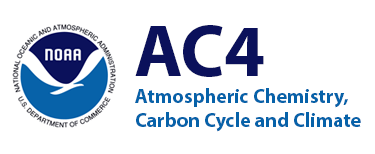AEROMMA


Atmospheric Emissions and Reactions Observed from Megacities to Marine Areas (AEROMMA) addresses emerging research needs in urban air quality, marine chemistry influences on cloud formation, and interactions at the marine-urban interface.
Despite decades of decline in ground-level ozone and fine particulate matter (PM2.5), many U.S. metropolitan areas still violate the 8-hour ozone standard as regulated under the Clean Air Act. This could be a result of unanticipated trends in emissions, increasing influence of regional background sources, long-range transport, changes in atmospheric chemistry, and/or a consequence of a changing climate with heat waves in the United States becoming more frequent, longer in duration, and more intense. In fact, warming climate and increasing episodes of extreme heat—because they exacerbate air quality—require higher emission reductions to meet air quality standards, and present their own challenges due to various impacts of extreme heat.
Recent research has also revealed major gaps in our understanding of urban chemistry. In urban atmospheres, volatile chemical products (VCPs = coatings, adhesives, inks, personal care products, cleaning agents, etc.) are emerging as a major source of volatile organic compounds (VOCs), which have harmful environmental and health impacts. The emissions and impacts of VCPs on atmospheric chemistry are not well understood. In the presence of nitrogen oxides (NOx), VOCs undergo chemistry that lead to the formation of ground-level ozone and aerosols. In a pilot study, field measurements in New York City revealed that fragrant consumer products, such as air freshener, and other VCPs account for over half of the anthropogenic VOC emissions, and enhance formation of ground-level ozone during a heatwave event. Ground-level ozone can trigger a variety of health problems in children, the elderly, and people of all ages who have lung diseases such as asthma.
To improve our understanding of emissions and chemical reactions that affect urban air quality and climate, the NOAA Chemical Sciences Laboratory is planning the Atmospheric Emissions and Reactions Observed from Megacities to Marine Areas (AEROMMA) aircraft based field campaign to collect new observations from megacities to marine environments, currently scheduled for the summer of 2023.
In FY21, the AC4 program focused on a subset of AEROMMA by seeking to support studies of emissions and chemical transformation in the urban atmosphere. Specifically, AC4 is supporting the types of projects that:
- Determine organics emissions and chemistry, including of understudied VCPs to better understand the impact on ozone and aerosol formation, and to study their relative importance on urban air quality compared to other sources of VOCs such as from energy-related, cooking, and biogenic (natural) sources.
- Determine reactive nitrogen emissions and chemistry in urban corridor(s) (i.e., urban core to suburban and outlying rural areas) to understand the current importance of combustion and non-combustion sources, continue the trend analysis, and determine changes in the reactive nitrogen cycle chemistry and its influence on ozone and aerosol formation.
- Determine the fraction of urban VOC and NOx emissions associated with emissions of CO2 and methane (CH4) from transportation, buildings, industry, and landfills to quantify co-benefits of managing both air quality and carbon emissions in urban settings.
- In line with CPO’s Risk Area Initiative, specifically extreme heat, investigate urban meteorology to better understand extreme heat impacts on urban air quality, urban heat islands, and the role of long-range transport versus local sources of air pollution.
ACCESS a whitepaper and more information about AEROMMA
Visit Chemical Science Laboratory’s AEROMMA homepage for more information


